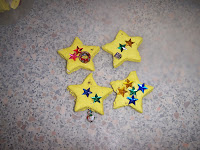
I made this for dinner last night and worked out how much each ingredient cost to get a total cost as well as a cost per serve. At just over $3 per serve, you can afford to eat the best free-range chicken!
Ingredients:
375g pasta - I used large vegie spirals but you could also use something like rigatoni - $1.69
60g butter - $50c
600g chicken breast fillets, diced into 1cm pieces. I used free range chicken - $9.61 (My husband said it had too much chicken in it, so you could use about half the chicken)
100g button mushrooms, sliced thinly - $1.00
2 tablespoons plain flour - 5c
2 cups milk - 55c
1/2 cup coarsly grated romano cheese - $1.24 - you could use parmesan
1 1/4 cup coarsly grated cheddar cheese - $2.20 (I found it a bit too cheesy for my liking, so will be using half the amount of cheese the next time)
170g (1 bunch) asparagus, trimmed, chopped coarsly - $2 (I used fresh asparagus and microwaved it a bit, but you could used tinned asparagus)
1/4 cup parsley, optional - free from my garden
Total cost - $18.84
Serves 6, so cost per serve is $3.14
1. Preheat oven to 200 degrees celsius (180 fan forced). My oven is in farhenheit, so I put it on 400 degrees F.
2. Cook pasta in a large saucepan of boiling water until tender. Drain.
3. Meanwhile, heat a third of the butter in a large frying pan. Cook chicken in batches until brown and cooked through.
4. Heat remaining butter in same pan, cook mushrooms, stirring, until tender. Add flour, cook, stirring 1 minute. Gradually add milk, stirring over medium heat until mixture boils and thickens. Stir in chicken, 1/4 cup of romano and 3/4 cup cheddar and the asparagus.
5. Combine chicken mixture and drained pasta in a 2.5 litre (10 cup) capacity ovenproof dish, sprinkle with remaining cheeses. Cook, uncovered, in oven, about 15 minutes or until top is browned lightly. Sprinkle with parsley to serve.
(Recipe adapted from
Australian Women's Weekly Chicken Favourites)
For those of you with children, my two year old loved it, except for the asparagus.
As I mentioned above, I found it to be too cheesy. If you halved the cheese, you could probably make this for less than $3 per serve. Non free-range chicken is also half the price of free-range chicken, but doens't taste as good.














































